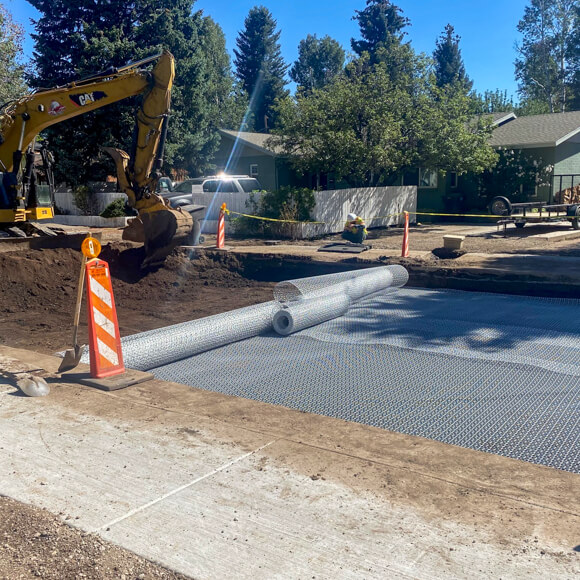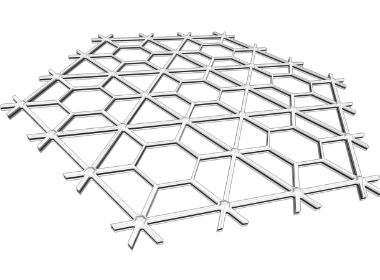
Navajo Drive
March 2021
Tame monsoon season while saving money with Tensar® InterAx®
- Owner: City of Flagstaff
- Geotechnical Engineer: Speedie and Associates
The City of Flagstaff, Arizona is two hours north of Phoenix, AZ in the San Francisco Mountains. The geology in the project area is made up of a mixture of volcanic rocks and moisture sensitive silty clay. Despite long-term drought conditions, Flagstaff experiences a months-long monsoon season during the summer in which they get microbursts of rain almost every day. Runoff has increased over the past few years to the point where the City must use sandbags in areas to prevent residences and businesses from flooding. To deal with these conditions, the original plan was to put down two layers of Type 2 BX geogrid with 2 feet of aggregate base course for stabilization and five inches of asphalt concrete on top. This plan would have been very expensive to execute because of the amount of haul off, aggregate base, and asphalt concrete required. The City worked with Tensar to figure out a more cost-effective and constructable plan that could handle the moisture and be carried out in wet conditions, given the frequent microbursts which would likely occur during construction.
Tensar worked with local geotechnical engineer, Speedie and Associates, on a design using one layer of NX850 InterAx Geogrid with a maximum of only 15 inches of base course. The result was $200,000 plus in savings in base course and excavation. Before construction began, Dynamic Cone Penetrometer (DCP) testing was conducted by Speedie on the subgrade. The CBR within the first two feet was so low as to not even register on the DCP, indicating poor construction conditions. During construction, to deal with the weather, the contractor opened one hundred feet of roadway at a time. If the subgrade had standing water or mud, fabric was placed to provide separation. A layer of NX850 went down next, followed by 9 inches of aggregate base which interlocked with the grid. This layer was then compacted and rolled with a steel drum roller. The section then underwent a proof roll test using a fully loaded water truck. After attempting to make the test section fail with several passes of the truck, the team observed no signs of vertical movement, indicating excellent confinement of the aggregate. An additional 6 inches of aggregate base was added to finish the section, and the road was ready to be paved with hot mix asphalt, with no flexing under the asphalt truck. The 9 inches of aggregate on one layer of NX850 was more effective at stabilizing the road section than previously constructed sections that used 2 layers of BX geogrid and 24 inches of aggregate, some of which had to be dug out and rebuilt. Tensar’swork with the City addressed challenging conditions and resulted in significant cost savings and a road foundation that will perform long term.




